Feeding Dahlias: Add Organic Matter During Flowering And Use A Potassium-Rich Feed

PERENNIALS > DAHLIAS > FEEDING

Elizabeth is a Permaculture Garden Designer, Sustainability Consultant and Professional Writer, working as an advocate for positive change. She graduated from the University of St. Andrews with an MA in English and Philosophy and obtained a Diploma in Applied Permaculture Design from the Permaculture Association.
Reviewed By DAN ORI

Dan has over 27 years’ under his belt caring for plants and gardens. Working as a Horticultural Instructor and Consultant, he draws on a diverse range of experience that includes working as a Head Gardener, Tree Surgeon, Garden Centre Trouble Shooter, and writer of academic papers. Dan has a Level 3 Diploma in Horticulture and is currently a candidate for the RHS’s most prestigious award – The Master of Horticulture.
Contributions From DAVID HALL

David is the Director at Halls of Heddon, which is a dahlia nursery established in 1921. David has a large following on social media and runs a YouTube channel, where he shares updates on the dahlias he grows each year.

A dahlia lover based in Scotland, Elaine owns Dachshund Dahlia Plant Nursery, a specialist seller that offers some varieties of dahlias for sale that are not commonly found in the UK.

Emily is a Gardening Writer, Photographer and Videographer from Derbyshire, UK. She is the Founder of Emily's Green Diary - a community of more than 75,000 people who share in her gardening journey.
IN THIS GUIDE
Dahlias have fairly high nutrient requirements and, like other flowering plants, require plenty of potassium to bloom well.
In order to meet these flowering plants’ nutritional needs, feeding this plant with a potassium-rich feed is beneficial, as David Hall, manager and director of Halls of Heddon, explains:
“Dahlias respond well to regular feeding – but don’t overdo it. A high nitrogen feed can be used in the early stages, then a balanced feed is best after a few weeks.
“As soon as the buds appear, a tomato feed or a fertiliser high in potash should be used. This will help with stem strength and flower colour.”

However, it is also important to consider the environment these plants are growing in.
Feeding can be optimised by following these 3 key rules:
- Mulch well with homemade compost or well-rotted manure upon planting and replenish this mulch every year in spring.
- Consider mulching additionally in summer with a mulch of leaves from dynamic accumulator plants that contain plenty of potassium.
- During the flowering period, feed once a fortnight with a potassium-rich organic liquid plant feed. A feed suited to tomatoes such as a comfrey liquid feed will also suit dahlias well. Feed once a week if growing in containers.
Here’s more information on the three key steps to take in an organic garden when caring for your dahlias.
1) Provide Healthy & Fertile Soil

Providing for any plant’s nutritional needs always comes back to the soil.
“I plant Dahlias in compost or soil I have added granular controlled orcontinuous release fertiliser to,” shares Horticultural Consultant Dan Ori.
“If you use a 6 month controlled release product like Miracle-Gro all purpose continuous release plant food, that may be all that is required for outdoor planted Dahlias that will be dug up in autumn.
“If you use an organic granular controlled release product like Miracle-Gro Performance Organics all-purpose, after 3 months I would apply a top-dressing of granular feed mixed with some fresh compost.”
Mulching around your plants and replenishing this mulch each spring helps to preserve a healthy soil biome, with plenty of nutrients and the micro-organisms and other soil life we need within the system.
When planting dahlias you should spread a layer of homemade compost, leaf mould, or well-rotted manure around your plants.
This material will help to provide the key nutrients of nitrogen, phosphorus and potassium, as well as many other essential plant nutrients, and will release these slowly over time.
The mulch will also help conserve soil moisture, and suppress weed growth to a degree, helping dahlias thrive by reducing competition around them.
2) Add Organic Matter During Flowering
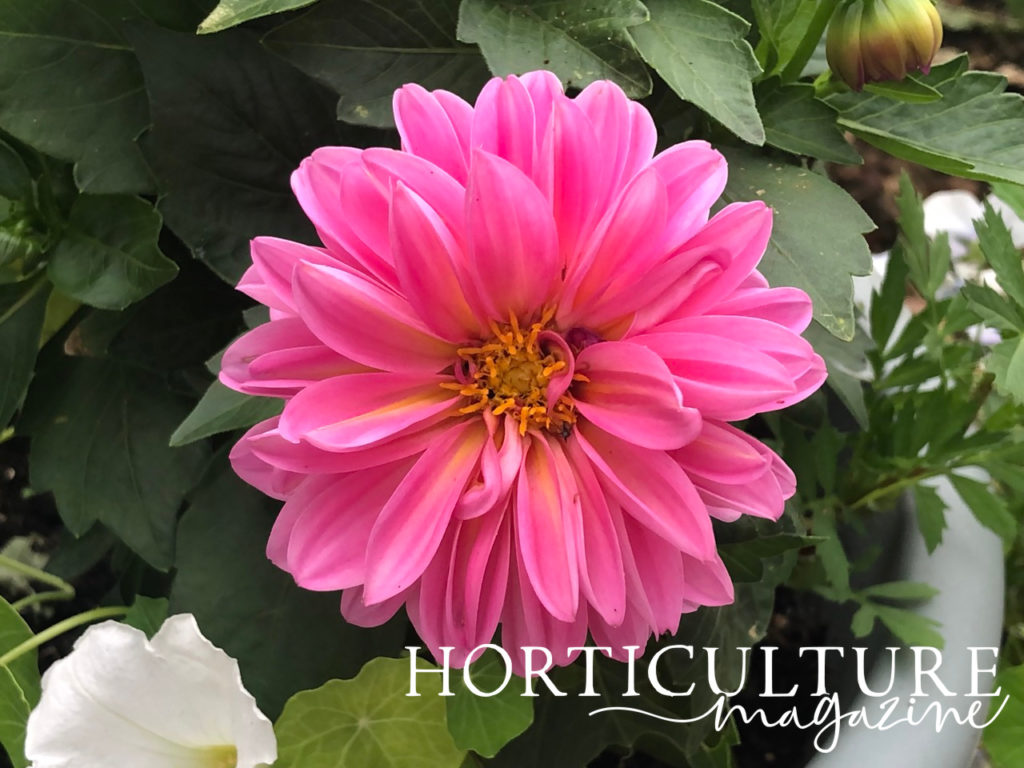
As dahlias begin to flower, they will have the need for potassium to flower well.
One option to consider to make sure that there is sufficient potassium in the soil around your dahlias is to add an additional layer of mulch using leaves from dynamic accumulators of this nutrient.
Chenopodium album, Amaranthus, borage and comfrey are some plants that can be effective in gathering potassium.
When dropped on the soil around dahlias, the leaves of these plants can return these nutrients to the soil and help to feed your plants.
3) Use A Potassium-Rich Feed
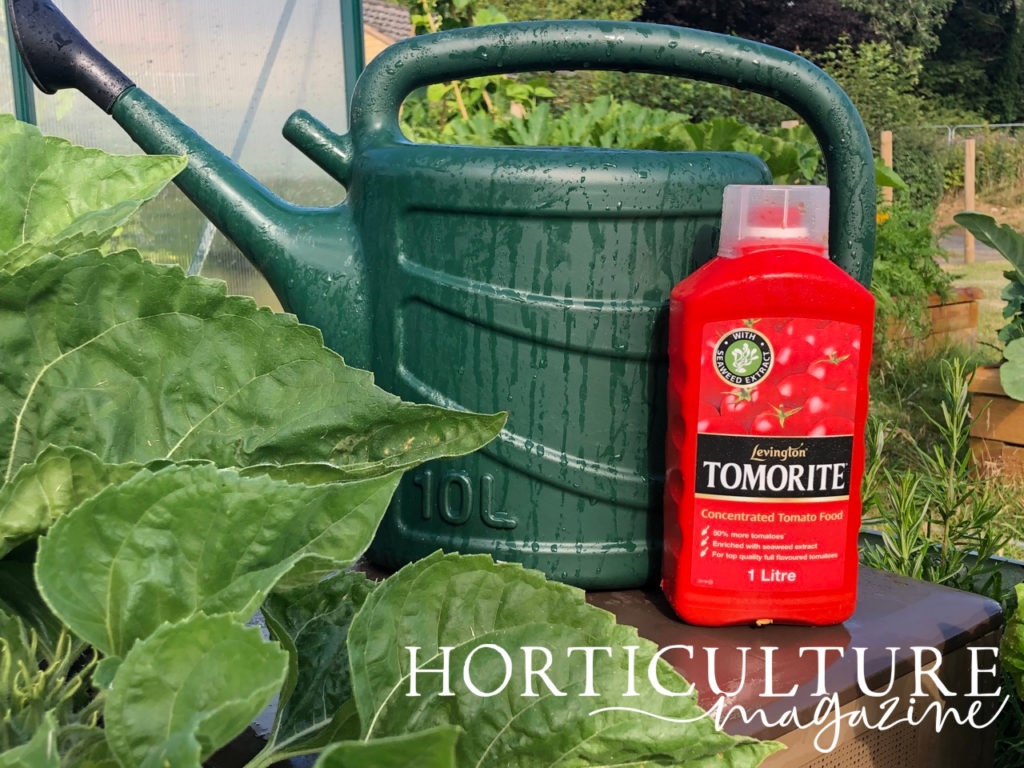
To give your dahlias a speedy boost of potassium and other nutrients, you can also – during the flowering period – feed your plants with a potassium-rich organic, liquid plant feed.
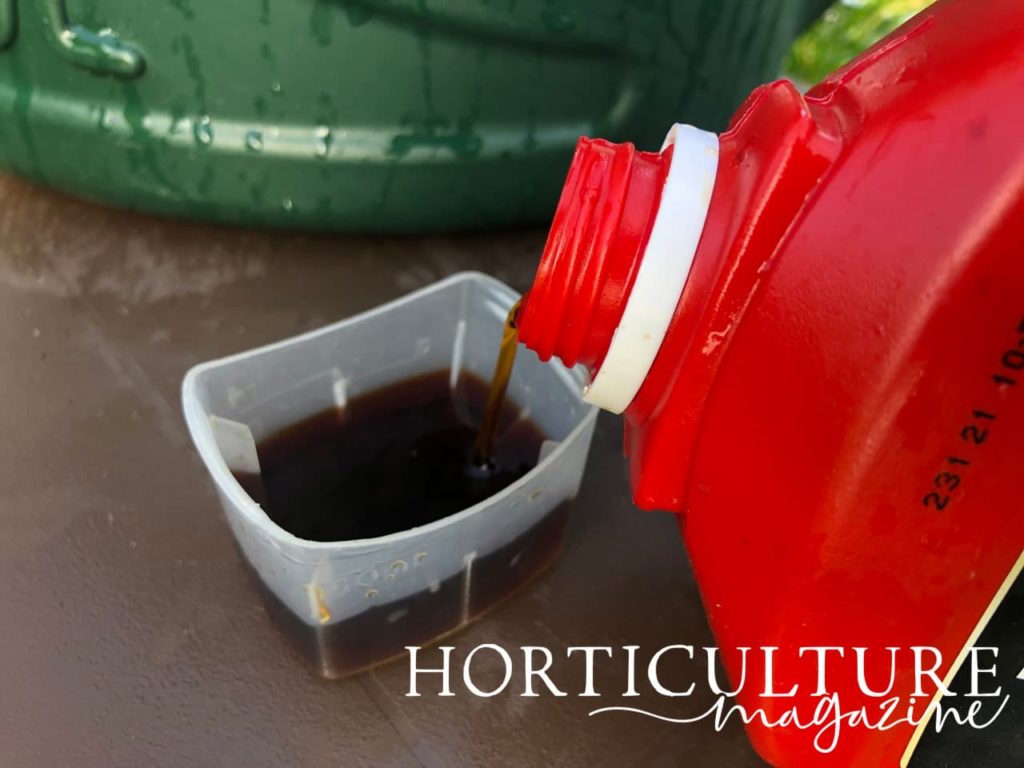
A feed suited to tomatoes will also suit dahlias well says Elaine Patullo from Dachshund Dahlia Plant Nursery:
“A good quality feed is essential. Tomato feed can be used initially, and then liquid seaweed can assist with keeping the plants flowering all season.”
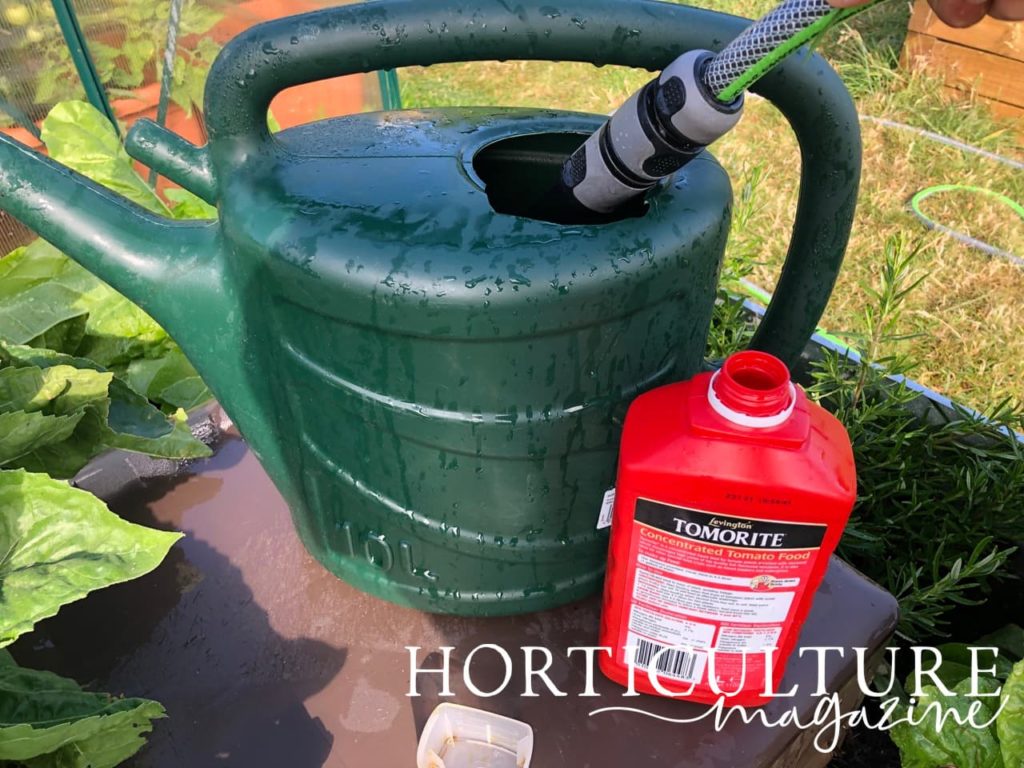
A comfrey tea is one good organic option to consider and you can also make liquid plant feeds using other plants mentioned above.
Through mulching and liquid feeds, you can make sure that your dahlias continue to flower well and bloom beautifully each year.
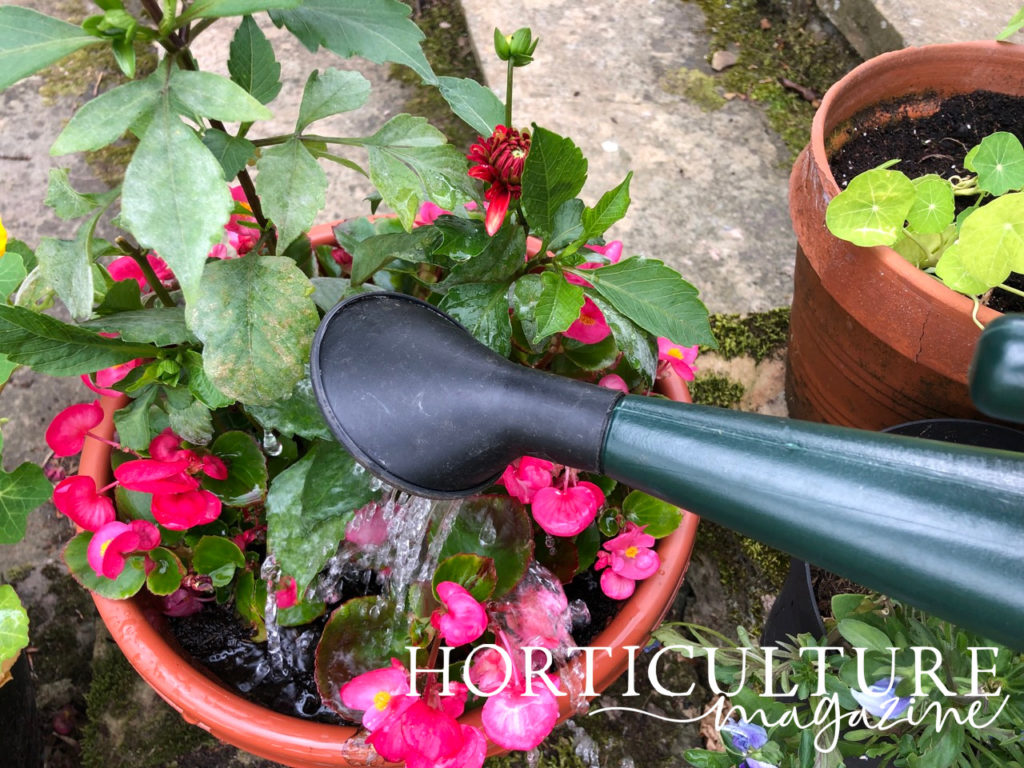
“If I judge it necessary to further boost flowering, I can add liquid feeds high in potassium like tomato feed,” shares Dan.
“My advice would be to pay a few pounds more for a tomato feed with seaweed extract, as this has numerous plant health benefits, including addressing any nutrient deficiencies that may be causing discolouration in leaves.”
